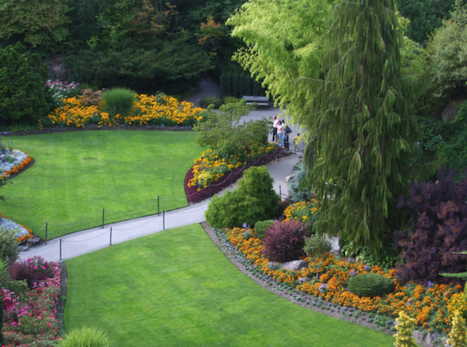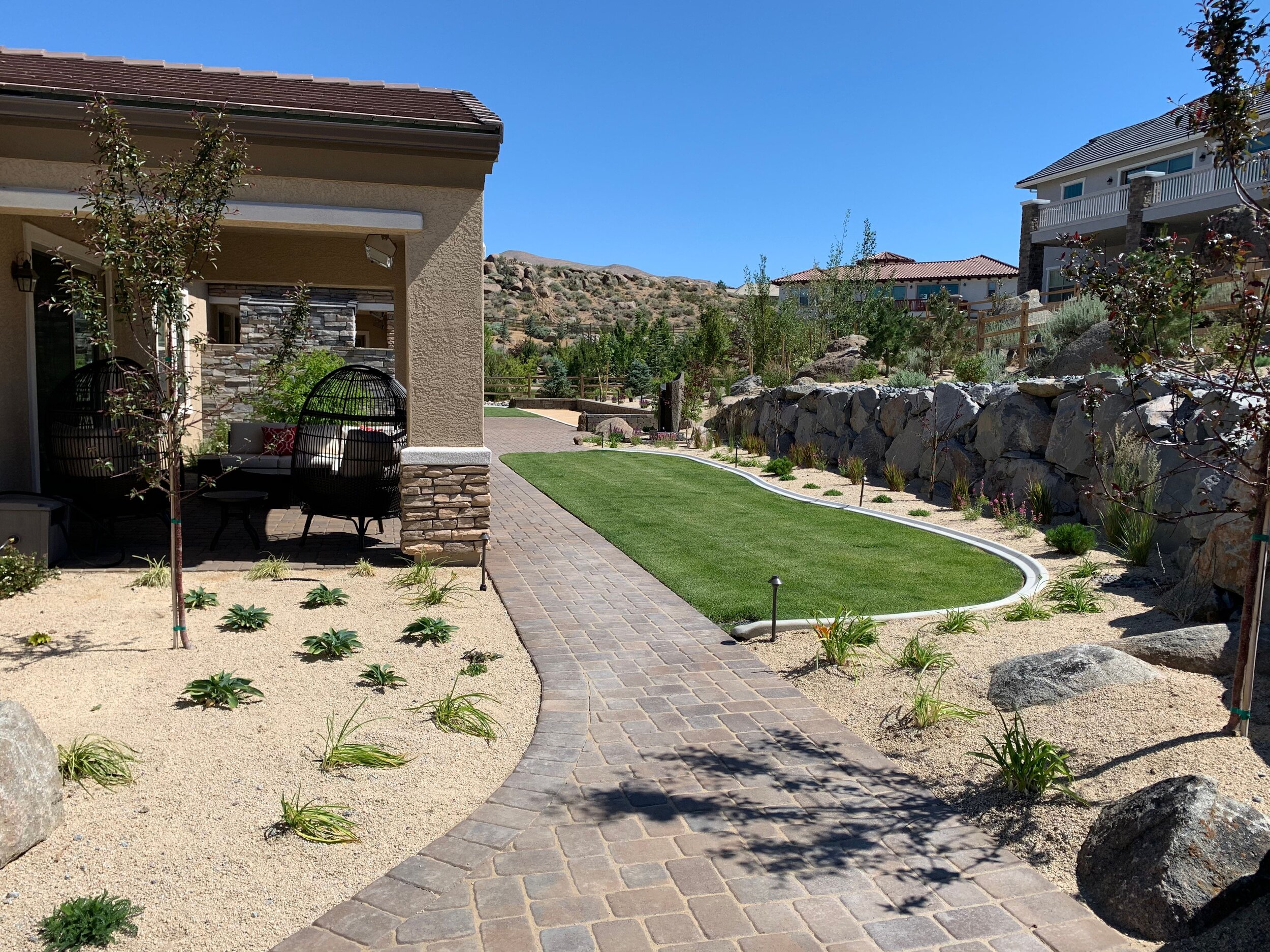Elevate Your Property's Visual With Lasting Landscaping Designs and Eco-Friendly Practices

Benefits of Sustainable Landscaping
Implementing lasting landscaping techniques not only conserves all-natural resources yet likewise promotes biodiversity and improves overall ecological health and wellness. One significant benefit is the reduction of water intake through the usage of drought-resistant plants, rain yards, and effective watering systems.
Moreover, sustainable landscape design can improve dirt health by lessening making use of chemical plant foods and pesticides, consequently creating a much healthier environment for plant development and useful soil microorganisms. This, in turn, boosts the overall durability of the landscape to endure ecological stressors and environment modification influences - landscaping contractor Jacksonville. In addition, sustainable landscaping techniques can draw in varied wildlife, consisting of pollinators like butterflies and , cultivating a more balanced and lively ecosystem within the building
Incorporating Native Plants
To build on the benefits of sustainable landscaping, a calculated emphasis on including indigenous plants can additionally boost eco-friendly resilience and advertise biodiversity within the landscape. Indigenous plants are varieties that normally happen in a certain location and have progressed to prosper in the regional environment, dirt conditions, and environment. By including native plants in landscaping designs, residential or commercial property owners can decrease water usage, minimize the demand for chemical pesticides and plant foods, and sustain the regional wildlife population.
Including indigenous plants additionally aids in maintaining the one-of-a-kind character and identification of a region's flora. These plants typically require much less maintenance once established, making them a cost-effective and lasting landscaping remedy in the lengthy run. Furthermore, native plants can bring in native pollinators like and butterflies, contributing to the total health and wellness of the community.
When choosing indigenous plants for landscaping tasks, it is necessary to select varieties that are appropriate to the specific ecological conditions of the site. Consulting with neighborhood nurseries or botanical yards can give useful support on selecting the appropriate indigenous plants for a particular area. By integrating native plants right into landscape design styles, residential or commercial property owners can develop lovely, sustainable outdoor areas that profit both the atmosphere and the area.

Water Preservation Strategies
Reliable watering techniques play an essential role in lasting landscape design methods, guaranteeing ideal water conservation efforts in outdoor spaces. Applying strategies such as drip watering, rainwater harvesting, and wise irrigation systems can substantially minimize water waste while preserving a healthy landscape. Drip irrigation delivers water straight to the roots of plants, lessening evaporation and runoff. Rainwater harvesting includes gathering rainwater from roofs and storing it for later usage in watering, lowering the dependence on municipal water resources. Smart irrigation systems make use of weather condition information and soil moisture levels to adjust watering timetables, stopping overwatering and promoting water performance.
In addition to sophisticated watering methods, xeriscaping is one more water-saving landscaping method that concentrates on using drought-resistant plants, compost, and efficient irrigation to develop a low-water landscape design - lawn cleanup Jacksonville. By choosing indigenous plants that are fit to the neighborhood environment and soil conditions, homeowner can reduce the demand for excessive watering, eventually saving water and advertising a sustainable outdoor environment
Eco-Friendly Hardscaping Ideas
Enhancing outside spaces with green hardscaping features can contribute substantially to lasting landscaping practices. When thinking about hardscaping aspects, select products like redeemed timber, recycled concrete, or find out here now all-natural rock to minimize environmental impact. These products not just include a special visual attract your outside area however likewise decrease the need for brand-new sources removal.
Carrying out absorptive paving options such as gravel or absorptive concrete can aid lower water drainage and promote groundwater recharge. These alternatives allow rain to permeate right into the ground, stopping disintegration and lessening the concern on stormwater systems.
Integrating indigenous plants right into hardscaping styles can even more enhance eco-friendliness by sustaining neighborhood wild animals and minimizing the demand for too much watering or chemical treatments. By including environment-friendly wall surfaces or vertical yards, you can introduce a lot more greenery right into urban setups, improving air top quality and biodiversity.
Incorporating energy-efficient lights, such as solar-powered LEDs, into hardscaping layouts can decrease electricity usage and reduced your property's carbon footprint. Focusing on environment-friendly hardscaping ideas not only enhances the appeal of your outdoor area but likewise shows a dedication to environmental stewardship.
Upkeep Tips for Lasting Landscapes

On a regular basis prune plants to promote healthy and balanced growth and protect against overgrowth that can result in pest problems or diseases. Use natural fertilizers to nurture the soil and plants without unsafe chemicals that can leach right into the environment. For hardscaping aspects, such as absorptive pavers or rock pathways, routinely tidy them to stop particles buildup and preserve their functionality. By remaining positive with upkeep jobs, you can maintain the beauty and sustainability of your landscape for many years ahead.
Conclusion
Finally, sustainable landscaping methods provide many advantages for home proprietors, from improving the visual charm of the environments to advertising ecological preservation. By integrating native plants, carrying out water conservation methods, and using green hardscaping concepts, homeowner can develop attractive landscapes that are additionally eco liable. With correct upkeep, lasting landscapes can prosper and contribute to a much healthier ecological community for both human beings and wild animals.
Moreover, sustainable landscaping my latest blog post can improve soil wellness by lessening the use of chemical fertilizers and pesticides, therefore creating a much healthier atmosphere for plant development and useful soil organisms.To build upon the benefits of sustainable landscaping, a strategic emphasis on integrating native plants can even more improve environmental durability and promote biodiversity within the landscape. By including native plants in landscape design styles, residential property owners can lower water usage, minimize the requirement for chemical pesticides and fertilizers, and sustain the local wild animals population.
These plants often need less maintenance as soon as established, making them a sustainable and economical landscape design option in the lengthy run. By integrating indigenous plants into landscaping layouts, residential or commercial property proprietors can create attractive, sustainable exterior spaces that profit both the environment and the neighborhood.